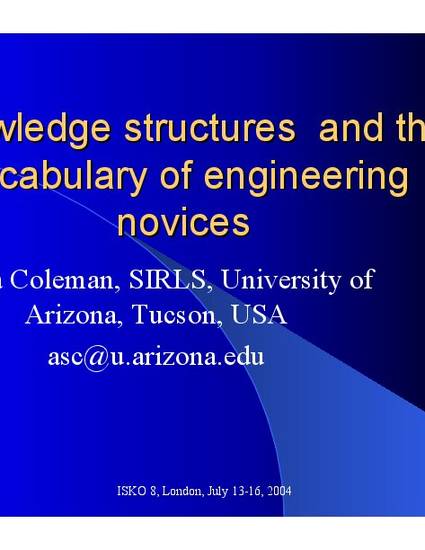
Presentation
Knowledge structures and the vocabulary of engineering novices
Eighth International Conference of the International Society for Knowledge Organization
(2004)
Abstract
This presentation is based on the refereed paper published in the ISKO 8 proceedings (see References for citation). It describes a study of the language used by undergraduate engineering students engaged in a civil engineering laboratory. Learnerâ s concepts and relationships in the area of soil consolidation were elicited in order to provide an understanding of the structural knowledge of novices and compare it with the knowledge structures of a human expert and a thesaurus tool. Concept maps and pathfinder networks were used to visualize and analyze the resultant knowledge structures of novice learners, expert, and tool. Results show that there is little similarity between the knowledge structures of the novice, the expert, and the tool. There is preliminary evidence that students with complex knowledge structures earn better grades thereby, encouraging collaborative research between instructional evaluation and knowledge organization in order to measure the educational impact of digital libraries (DL); for example, cause-effect relationships could be studied between the vocabularies used in browsing and other navigational systems in a DL and the educational outcomes achieved.
Keywords
- Knowledge structures,
- learning science,
- knowledge representation,
- knowledge organization,
- knowledge management
Disciplines
Publication Date
July 16, 2004
Location
London, UK
Citation Information
Anita S. Coleman. "Knowledge structures and the vocabulary of engineering novices" Eighth International Conference of the International Society for Knowledge Organization (2004) Available at: http://works.bepress.com/anita-coleman/74/
